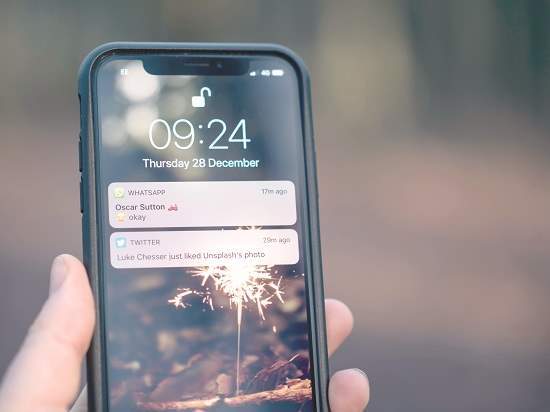How many notifications do you get per day on your smartphone? How many are welcome, relevant, or useful, and how many are just a nuisance or the equivalent of spam with a sound?
اضافة اعلان
Living with digital technology can be a thrill. However, mastering the fine art of making it work for you, and not the other way round, is important to keeping the experience pleasant and rewarding.
Some users have indeed mastered the art to some degree but others have not. They are hardly to blame, given the frequency of product changes and the way in which we are supposed to make use of them.
There is so much to be aware of and so much to learn and relearn, that doing a perfect job — ideally optimizing tech or fine-tuning it 100 percent to your advantage — is mission impossible. This is true whether you are tech-minded or not. The best we can do is reach a compromise.
 “Living with digital technology can be a thrill. However, mastering the fine art of making it work for you, and not the other way round, is important,” writes Jordan News columnist Jean-Claude Elias. (Photo: Unsplash)
“Living with digital technology can be a thrill. However, mastering the fine art of making it work for you, and not the other way round, is important,” writes Jordan News columnist Jean-Claude Elias. (Photo: Unsplash)
The notifications we receive on our phones are an example of a technology that needs to be understood and controlled, less it becomes a nuisance. They are triggered and sent by apps installed on a handset.
Depending on your age group and your occupation, you might have a different number of apps installed. A blog on simform.com has estimated that “an average person has 40 apps installed … millennials usually have more than 67 installed apps … commonly used apps remain at just 25. With the increase in the age group, the number of apps installed decreases.” Yes, an average of 40 apps sounds like a good estimate.
Just imagine if only half of these applications would send you one notification per day! This is in addition to all incoming emails that you might need to check, of course. This is where people become a slave to their phones.
Unfortunately, apps are defaulted to have their notifications’ settings enabled. This means that unless you specifically go and turn them off, the notifications are already set to start pouring in. The remedy is simple, but it needs patience to be implemented. You must go to each app, and expressly choose to disable its notifications. And if you have tens of them on your phone, you will have to go in and perform the operation as many times!
Things become less simple when you install a new app and forget to disable its notification. You have already done it for all the others in an organized and systematic manner, so forgetting to do it for new apps is normal.
Some apps make the game even more interesting by giving you the option to disable or enable different types of notifications, such as announcements, promotions, or updates. Managing all of this requires an extra dose of time and patience that not all users might necessarily have. Moreover, the line between announcements and promotions is often blurred.
There is always the option to mute all notification sounds from your phone’s main settings, but you would rarely want to apply that to all of your apps, all the time. You still want to “be notified” by certain apps. This is why there is the option to use the notification sound (or tone) for specific apps in a smart way. This too requires time and patience but is often rewarding. There are two possibilities here.
The first is to record a purely silent tone for about three-to-five seconds — name it “quiet” for example — and then assign it as the customized tone for the apps you do not want to hear notifications for.
The second possibility is to assign a specific tone to each app, or at least to those you use and need more frequently than the others. This way you can easily tell what app is notifying you just by hearing the tone. All phones come with a set of several built-in tones to choose from.
You would rarely need more custom tones, but if it is not enough, you can always record your own personal tone or music. It is the same process as using a personalized ringtone for your phone. Just try to use it smartly and ethically, avoiding sounds that would be too weird or too loud, as to not disturb others.
The best apps, like WhatsApp for instance, allow you to mute notifications per contact, per group, and for a certain time. Unfortunately, most other apps do not provide such conveniences.
Whatever method you might choose, managing and controlling notifications takes time and patience. But if you have a certain number of apps installed and want peace of mind, getting organized about your notifications is important and will spare your nerves and your time.
Jean-Claude Elias is a computer engineer and a classically trained pianist and guitarist. He has been regularly writing IT articles, reviewing music albums, and covering concerts for more than 30 years.
Read more Opinion and Analysis






